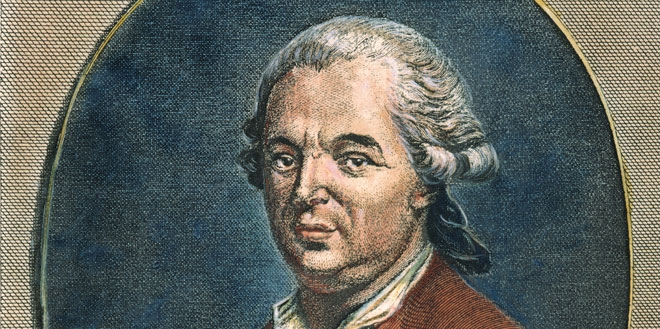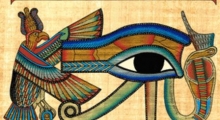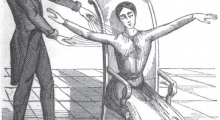
Imagine this – you are sitting in a theatre and you find you are absolutely “mesmerised” by the speaker. Chances are you won’t dance, sleep, swoon, or fall into convulsions. But if Franz Anton Mesmer was addressing the audience, such behaviour would not be unusual. The word ‘mesmerise’ has lived on, but who was the person behind it? Why was he so famous?
The concerned physician
Mesmer, a visionary 18th century physician and healer achieved remarkable cures. He was an unusual man who was deeply concerned by the dreadful diseases people were suffering from, and highly critical of current approaches to medicine. He thought the use of bleeding, purgatives and opiates were often more painful and terrifying than the diseases themselves. So he set out to develop a method to relieve the suffering of his patients in as pain-free a manner as possible.
Animal Magnetism
Mesmer believed in an invisible, curative fluid or energy pervading the universe that influenced the human body. Highly influenced by the work of Isaac Newton and the theory of gravity, he theorised that the “tidal” influences of the planets also operate on the human body through a universal force, which he termed “animal magnetism”. According to Mesmer, an unbalanced supply of healing energy in the body would be the difference between health and illness. Consequently, he spent a great deal of time and effort in trying to master that "invisible fluid."
Hypnotic powers
Mesmer believed cures could be effected by having patients do things such as sit with their feet in a fountain of magnetised water while holding cables attached to magnetised trees. Mesmer then came to believe that magnetic powers resided in himself, and during highly fashionable curative sessions in Paris he induced in his patients reactions ranging from sleeping or dancing to convulsions. These reactions were actually brought about by hypnotic powers that Mesmer was at first unaware he possessed.
Intense experiences
The method Mesmer succeeded in developing has been defined as: The capacity of raising the emotional state of an individual, or a crowd, to an abnormal, but controllable intensity. Music, which plays a role in the control of the mind and nervous system of people, was a tool used by Mesmer to raise this emotional state.
Mesmer’s breakthrough case
Mesmer’s devotion to his patients was quite extraordinary. His breakthrough case was that of Franzl Oesterline, a 27 year old woman suffering from what he described as a convulsive malady: “the most troublesome symptoms of which was that the blood rushed to her head and there set up the most cruel toothaches and earaches, followed by delirium, rage, vomiting and swooning”. These symptoms were so severe that Fraulein Oesterline moved into Mesmer’s house to receive round-the-clock care.
Mesmer effected a cure by using a magnet to disrupt the gravitational tides adversely affecting his patient. He successfully induced in Fraulein Oesterline the sensation of a fluid draining rapidly from her body, taking her illness with it. Her recovery after that was complete and virtually instantaneous.
Hypnotic suggestion
From a contemporary perspective, we can see that Mesmer’s results were produced by hypnotic suggestion. Even Mesmer realised that the magnet had nothing to do with the cure. The magnet was simply a device that allowed this to happen, along with the complex and lengthy sequence of hand gestures and touch known as the “mesmeric pass”.
Mesmer went on to achieve similarly impressive results with other patients, claiming cures for blindness, paralysis, convulsions and many other debilitating conditions. He became a celebrity and travelled extensively giving dramatic demonstrations of his techniques and powers at the courts of the European nobility.
Hostile reception
Mesmer’s taste for theatre and showmanship may well have contributed to the hostile reception he received from the medical establishment of the day. His personal belief was that he dared to get results without using conventional medical techniques. Whatever the case, his life and career became plagued with controversy.
Ancient practice
Today we have come to learn that hypnosis and trance states are fundamental human traits, which have been around for as long as humanity itself. Ancient texts from Egypt, China, Greece and Rome describe practices that today we might call “hypnotic”. For example, a Third Century papyrus scroll discovered at Thebes describes a young slave boy being entranced by the flickering flames of an oil lamp in order to receive advice from an oracle. Mesmer was the first to lead hypnotism out of the realms of the occult and into scientific study,
The Doctor’s Legacy
Mesmer’s legacy persisted, into the nineteenth century and beyond, as arguments over his techniques shaped the development of hypnosis as we know it today. Mesmer is considered the early pioneer of modern hypnotism. The word “mesmerise” having shed its reference to the early pioneer of modern hypnotism, can have meanings such as: to enthrall, hypnotise or spellbind and lives on in our vocabulary.








